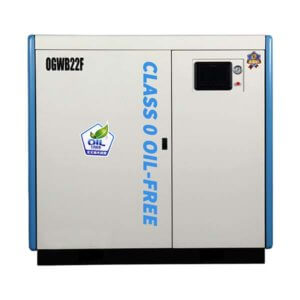Contents
Compressed air distribution is a method of transporting and distributing compressed air from one point to another. It is used in many industries, including energy production, petrochemical manufacturing, papermaking, and food processing plants.
Compressed Air Distribution Systems are defined by the Pressure, Temperature, and Flow Range of each connection point within the system. These systems can be designed and constructed for single or multiple applications. Typically these systems consist of
- A Piping Network that distributes air at a given pressure from an air source to multiple endpoints.
- Air Compressors to generate the source pressure.
- Several aseptic check valves are used to isolate compressed airlines from each other and/or the atmosphere.
The following blog will inform you of different interesting facts related to compressed air distribution systems.
Goal of the Efficient Compressed Air Distribution System
Goal of the Efficient Compressed Air Distribution System
The goal of an efficient compressed air distribution system is to provide the right amount and pressure at every point in your building. This will ensure that your employees are safe, happy, and productive by preventing leaks from occurring before they happen.
Air Quality and Safety Standard
Air Quality and Safety Standard
Air quality and safety standards must also be strictly enforced when building your electrical system so that your compressed air distribution system operates efficiently, this means choosing screws properly sized and designed to fit your needs too.
Tips & Tools for Efficient Compressed Air Distribution System
Tips & Tools for Efficient Compressed Air Distribution System
Designing an efficient compressed air distribution system takes time but following tip will reduce risk while increasing profits:
- Use smaller compressors than you think (a 20 horsepower compressor will do a lot more work than a 15 horsepower)
There are many other considerations for compressed air distribution, so consult with an expert before designing your system.
Here are some tools that can be used for compressed air distribution:
- Air Compressors with a Maximum PSI of 100 – 250
- Tools such as an Air Hammer, Chipping Hammer, or Impact Wrench
- Screws and bolts (these come in all different shapes and sizes)
- Gaskets, Seals, Washers, and O-Rings for air connections to prevent leaks.
Designing an Efficient Compressed Air Distribution System
Designing an Efficient Compressed Air Distribution System
While designing an efficient compressed air distribution system, it is advised to thoroughly read the following factors. These significant factors will reduce the risk of pressure drop and increases the life span of your distribution system.
Layout design for Efficient Compressed Air Distribution System
It is important to plan your compressed air distribution system layout ahead of time to maintain efficiency. The most common layouts are radial, concentric, and longitudinal.
Loop Types for Efficient Distribution Systems
A loop-type distribution system is the most efficient and cost-effective way of distributing compressed air throughout an operation or building. It can also help increase production efficiency by providing constant pressure at every point in your building. When choosing a layout, there are two options: centrifugal loops (similar to the shape you see on an old-time telephone) and radial loops that work like streetlights around a city.
Feed the loop Type piping with a Dry Storage Tank
To style your compressed air distribution system more efficient, it is necessary to feed loop-type piping with a dry storage tank. This will allow you to use the most amount of stored air possible which saves money and time by eliminating compressors that have been shut off for cleaning or repairs.
Eliminate Quick Coupling Wherever Possible
When conniving an efficient compressed air distribution system you will want to eliminate quick coupling wherever possible. You have the best chance of success if both ends are machined and designed specifically for that connection, this ensures a leak-free seal every time. Quick coupling is only needed if quick disconnection of a hand tool or paint gun is required.
Limit the Number of Elbows
It is important to limit the number of elbows in your compressed air distribution system when designing an efficient one. This ensures you are not wasting any pressure and that there is enough space for maintenance checks, it also helps eliminate leaks. the pressure drop caused by the elbow is 2-10 feet of pipe which mostly depends on the size and fitting type.
Use A Regulator With Needle Valves
When designing compressors, you will need a regulator with needle valves on them so that you can regulate the pressure in your building.
Use Appropriate Sized Piping
It is important to use appropriate sized piping when designing an efficient compressed air distribution system because small diameters will lead to less efficiency and wasted energy, not to mention burst pipes. The most common size of pipe for distributing compressed air are:
- -½” (15mm) for general air distribution
- -¾” (20mm) for light-duty applications like hand tools and paint guns.
Avoid Low Points in the System
To keep your air distribution system as efficient as possible, you will need to avoid low points in the system. You can do this by using a high-pressure regulator on long runs of pipe and positioning compressors strategically throughout the building or operation.
Upper Limit for Compressed Air Flow Rate
When designing an effective compressed light-duty application like hand tools and paint guns, the upper limit for the compressed air flow rate is 25 CFM (cubic feet per minute).
Any Leakage is Unacceptable
It is important to note that any leakage in your compressed air distribution system cannot be tolerated. One leak has the potential to lead to ten more, which could result in an even bigger problem down the line. It’s best to get a quick repair before it becomes too difficult and expensive.
All Drops Must Have the Main Isolation Ball Valve
When designing a compressed air distribution system, it is important to ensure all drops must have the main isolation ball valve. This will keep your operation running smoothly and efficiently by ensuring that you can isolate any drop without shutting down the whole building. it must have a drip leg that easily removes the contamination that enters the system and must be reachable from the ground.
Air Distribution at Low, Medium, and High Pressure
Compressed air is distributed at low, medium, and high pressure. It’s important to know the difference between all three so that you can design an effective system for your business:
- high pressure will range from approximately 80 psi (pounds per square inch) up to 250psi
- medium pressure ranges from 20-80 psi.
- low pressure is anything less than 20 psi.
Avoid Turns in the System
It’s best to avoid turns when designing an effective compressed air distribution system because it wastes time, as well as your precious resources. The most efficient way to design long runs of pipe, for example, would be a 90-degree turn every 20-30 feet.
We hope that this article has helped you to understand more about compressed air distribution and the issues it can cause. Remember, if your business needs help with their compressed air system, we’re happy to talk through any questions or concerns you might have. You can also get in touch with us by emailing bjbeneair@gmail.com.








Leave A Comment